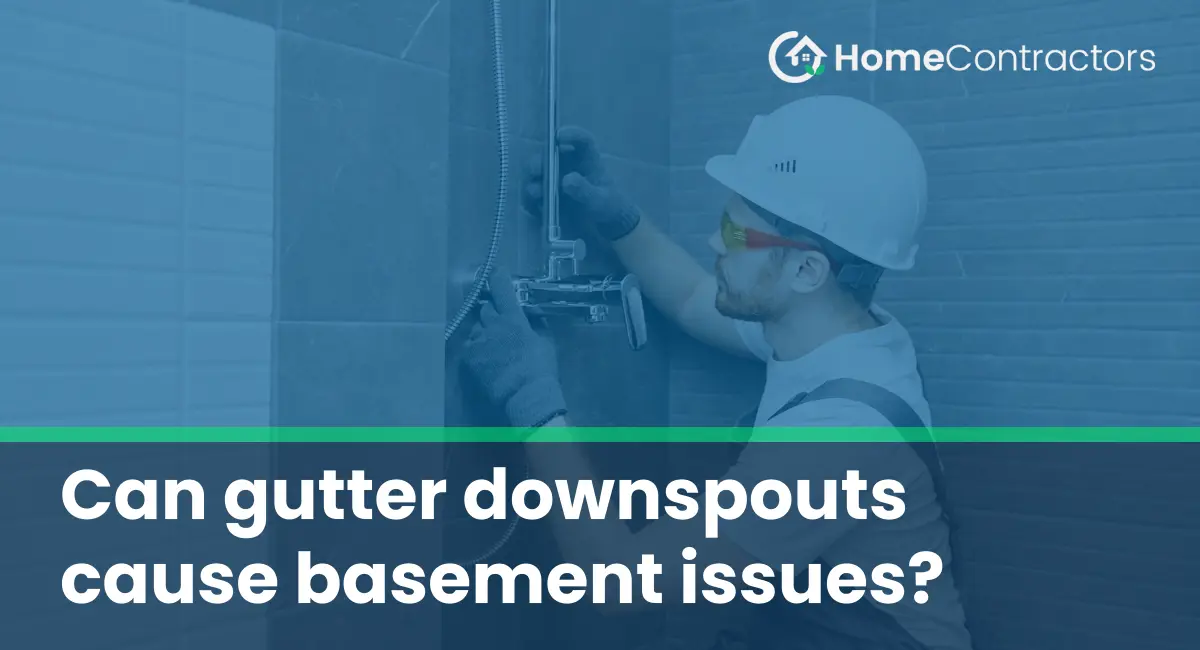Gutter downspouts play a crucial role in redirecting rainwater away from the house, protecting the foundation and basement from potential water damage. However, if these downspouts are not properly installed or maintained, they can indeed contribute to basement issues. In this article, we will delve into the potential problems that can arise from improperly functioning downspouts and explore the measures homeowners can take to mitigate these issues.
Importance of Gutter Downspouts
Gutter downspouts are an integral component of any home’s drainage system. Their purpose is to carry rainwater collected from the roof gutters and safely divert it away from the foundation and basement. By efficiently directing rainwater away from the house, downspouts prevent potential water buildup near the foundation, which can lead to serious structural damage and basement issues.
Common Basement Problems Caused by Faulty Downspouts
1. Water accumulation around the foundation:
One of the primary basement issues that can arise from faulty downspouts is water accumulation around the foundation. If the downspouts are either missing, clogged, or improperly positioned, rainwater can overflow from the gutters and saturate the ground near the foundation. This excess water can seep into the basement, leading to dampness, mold growth, and even structural damage over time.
2. Basement flooding:
Inadequate downspouts can contribute to basement flooding during heavy rainstorms. When there is an excessive amount of precipitation, the gutters may not be able to handle the water volume, causing it to overflow. If the downspouts fail to efficiently divert this overflow away from the house, it can penetrate the basement through cracks, gaps, or weak points in the foundation, resulting in significant water damage and potentially costly repairs.
3. Soil erosion and foundation instability:
When rainwater is not properly redirected away from the house, it can cause soil erosion around the foundation. This erosion can lead to the formation of voids or gaps beneath the foundation, compromising its stability. Over time, the foundation may settle unevenly, causing cracks in the basement walls or floors and resulting in water infiltration.
Mitigating Downspout-Related Basement Issues
1. Regular maintenance:
To prevent basement issues caused by faulty downspouts, regular maintenance is essential. Homeowners should clean their gutters and downspouts at least twice a year to remove any debris, such as leaves or twigs that can clog the system. Additionally, it is crucial to inspect the downspouts for cracks, leaks, or misalignments regularly and address any issues promptly.
2. Proper downspout positioning:
Ensuring that downspouts are properly positioned is key to redirecting rainwater away from the house. Downspouts should extend at least five feet away from the foundation, preferably onto a sloped surface or a designated drainage area. This length allows the water to disperse and prevents any accumulation near the foundation, reducing the risk of basement issues.
3. Downspout extensions and diverters:
For situations where the length of the downspouts does not suffice, adding downspout extensions or diverters can be a viable solution. Extensions increase the distance that water is moved away from the foundation, while diverters help to reroute water around vulnerable areas or toward drainage systems.
Gutter downspouts are vital in protecting the basement and foundation from water damage. However, if not properly installed or maintained, they can indeed contribute to basement issues. Homeowners must prioritize regular maintenance, proper downspout positioning, and the potential use of extensions or diverters to mitigate these problems. By taking these measures, homeowners can ensure that their gutter downspouts effectively redirect rainwater away from the house, preserving the integrity and dryness of their basement.
